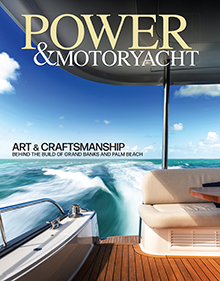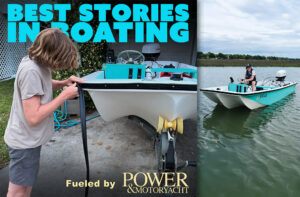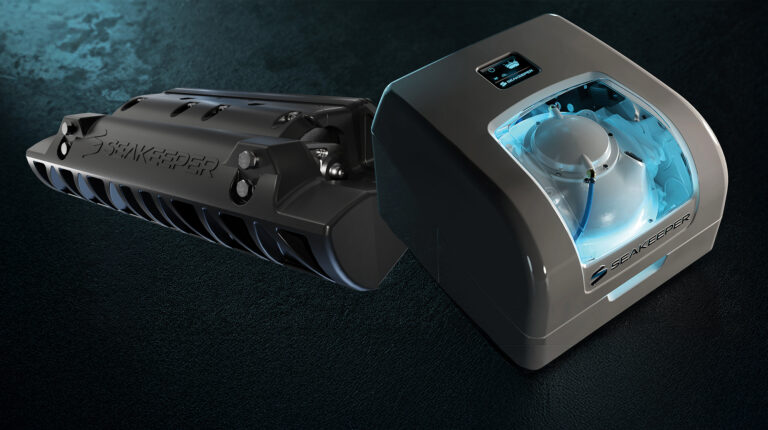
SeaKits’ MMS keeps track of parts to save you the trouble.
Think about how many individual parts make up your yacht: The engines are full of them, as are the genset, stabilizers, air conditioning, watermaker, and so forth. Now think about how many of those parts can wear out or break. How can you carry spares for all of them? Heck, how do you even know what spares to carry? The good news is, you no longer have to—SeaKits will do it all for you, and more.
Capt. Barry Kallander founded SeaKits in 2006 to provide “the first comprehensive solution for spare parts and maintenance management” for cruising yachts in the 40- to 100-foot range. Sign up for SeaKits’ Marine Maintenance System (MMS), and you get: a complete dossier of your yacht’s systems and equipment; a list of all spare parts by manufacturer and part number, with recommendations on which ones to carry onboard; maintenance planning and history; warranty management; electronic documentation; and more. All of the above is available to you at any time through the SeaKits’ Web site, and like almost everything online, your data is protected from unauthorized eyes by a user I.D. and password.
But that’s not all. If you don’t want to buy the parts yourself, SeaKits will do it for you and group the spares into kits, label each part, and pack them in water-resistant boxes (ask me what happens to spare head gaskets when stowed under a damp berth cushion for months) for safe onboard stowage, with an inventory list so you can keep track of what you need to replenish next time you’re in port. Just the labeling and packing is worth the cost of the service, considering the alternative is ruined spare parts in faraway ports or somewhere offshore.

All spares are labeled before being stowed in water-resistant plastic containers.
Anybody who’s cruised the Caribbean or the nonritzy areas of the Mediterranean knows how hard it can be to find replacement parts. SeaKits can help with this, too: Its global-logistics program, Follow Me, will send you spares quickly no matter where you are. The company also offers analysis of engine, gear, and hydraulic fluids, ABYC-compliant operator’s manuals, and vessel as-built verification that will verify maintenance and spare parts recommendations. Finally, SeaKits sells a Damage Control Kit containing wood plugs, hose clamps, cable ties, patching materials, wedges, a camp axe and folding saw, and that indispensable lifesaver, duct tape. It’s everything you need (you hope) for flooding control and leak repair for boats up to 120 feet or so.
What’s the bottom line on SeaKits? According to Kallander, the up-front cost ranges from $2,900 to $4,900, depending on yacht size; after that, there’s a yearly charge. (For a 55-footer, initial cost is $3,900, including the first year’s service, then $395 per year.) Spare parts are extra, of course. To set up a program for your yacht or to see a live demo of what the service can do for you, contact Kallander via SeaKits.
SeaKits
(978) 779-5211
MAINTENANCE Q&A
I have a 43-foot Pacemaker. Last season my port engine wouldn’t start. I’ve finally found someone who is willing to try to fix it, but his first request was to see an engine manual: It has twin 409s (280 hp). Do you have any idea where I might find an engine manual for it?—Al, via PMY Forum
I’m usually not a big fan of technology, but sometimes it can really save the day: I did a Google search and found a place with more manuals than you can imagine, including one (I think) on your 409s. A Vermont-based company, MarineEngine.com, has both an operator’s manual for the Crusader 409 for model years 1961 to 1966 ($24) and a service and technical manual for the same years ($42). The manuals are printed reproductions of the originals, not downloadable files, which I hate. You can order over the phone or online, and the site also has lots of other info that might be of use to you, including discussion groups on gasoline, diesel, and outboard engines. It’s worth a look even for folks whose motors are purring like kittens.
The 409 was a Chevrolet engine introduced in 1961, to compete with Ford’s 390 and 427. Not only was the 409 a hot engine on the road, it burned up the AM airwaves, too, in the Beach Boys’ song of the same name. (If you’re a middle-aged motorhead like I am, you can still remember the lyrics: “She’s real fine, my 409,” etc.) The engine was available in the Chevy Impala SS in ’61 and the Impala and Bel Air from ’62 to ’65, when it was replaced by the 396. With solid lifters and a pair of four-barrel carbs, the auto version produced 425 horses—enough power to make those old Impalas really jump. If somebody other than Crusader did a marinization, then maybe MarineEngine.com has the exact manual you need, or maybe the Crusader manuals will do the trick. In any case, it’s a start.
This article originally appeared in the August 2007 issue of Power & Motoryacht magazine.










